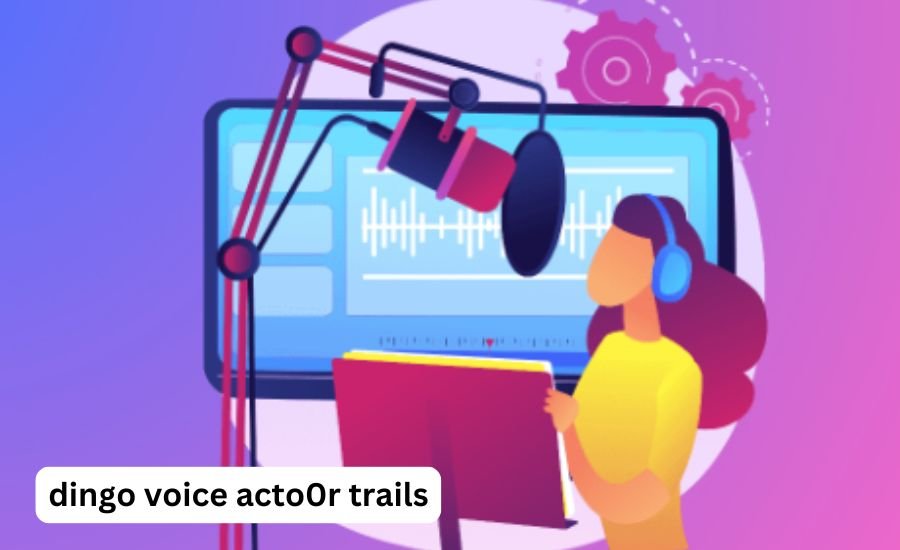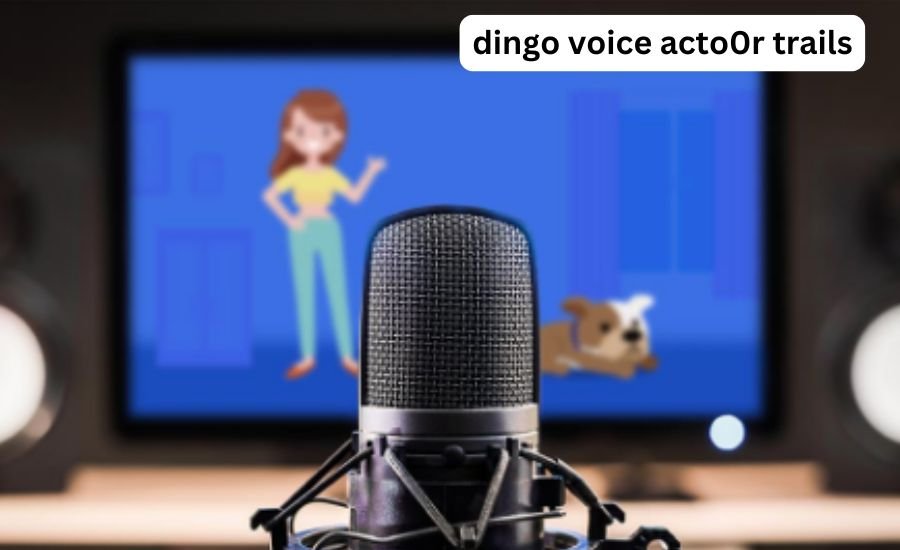“Dingo voice acto0r trails” explore the exciting world of how voice actors bring the sounds of dingoes to life in movies and shows. These talented individuals study the unique sounds of dingoes to create realistic barks, howls, and growls that add depth to animated characters. At Urban Insightz, we dive deep into fascinating topics like this, shedding light on the artistry behind voice acting and its role in storytelling. Understanding these trails can inspire creativity and appreciation for wildlife, making every dingo character even more engaging in the stories we love.
What Are Dingo Voice Acto0r Trails?
Dingo voice acto0r trails are special paths that voice actors take when they create sounds for animals in movies and shows. This means they pretend to be different animals, like dingoes, and make their sounds. These trails help us understand how animal voices are made and why they are important for storytelling.
When you hear a dingo howling in a movie, it might be a voice actor making that sound. These actors practice a lot to get it just right. They watch videos of real dingoes to learn how they sound. This practice is important because it helps them create realistic voices that we can believe.
These trails are not just about making noises. They are also about bringing characters to life. When a dingo barks or howls, it adds excitement to the story. It makes the scenes feel real and engaging for everyone watching. So, the next time you hear a dingo in a film, remember that there is a voice actor behind that sound!
The Role of Voice Acto0rs in Creating Animal Sounds
Voice actors play a crucial role in making animal sounds in films and television shows. They use their voices to mimic the sounds of various animals, including dingoes. This talent is what brings these animals to life on screen.
These actors have to be very skilled. They need to know how to make different sounds and match the emotions of the characters. For instance, if a dingo is happy, the voice actor must sound joyful. This way, the audience feels the same emotions as the characters in the story.
Training is a big part of a voice actor’s job. Many voice actors study different animals and their sounds. They learn the special ways that dingoes bark or howl. This knowledge helps them create the best possible animal voices. It’s like being a detective and figuring out how to sound just like a dingo!
How Dingo Sounds Are Used in Movies and Shows
Dingo sounds are often used in movies and shows to make scenes more exciting. When a dingo howls in the background, it can create a spooky or adventurous feeling. These sounds help to set the mood and keep the audience interested in the story.
In action films, dingo howls can make the viewer feel more connected to the adventure. It gives a sense of wildness and freedom. On the other hand, in a documentary, the real sounds of dingoes help viewers learn more about these animals and their behaviors.
Sound effects, like dingo barks, are also important during key moments. For example, when a character is in danger, hearing a dingo howl can add suspense. This way, the audience feels a rush of excitement as they watch the action unfold. Dingo sounds truly enhance the storytelling experience!
The Magic Behind Dingo Voice Acto0r Trails

There is a lot of magic behind dingo voice actor trails. It all starts with the actor’s creativity and imagination. They take the time to understand how dingoes sound in the wild. By listening closely, they can capture the essence of the dingo’s voice.
These actors often work in studios with sound engineers. Together, they create the perfect sound. The engineers help make sure that the dingo sounds are clear and fit well with the scenes. This teamwork is essential to bring the dingo voice actor trails to life.
Another magical aspect is how the voice actors bring emotions into their sounds. When a dingo is scared, the voice actor can mimic that fear with their voice. This makes it more believable for the audience. The combination of sounds and emotions helps create an unforgettable experience!
Famous Dingo Voice Acto0rs You Should Know
There are many talented voice actors who have lent their voices to dingoes in films and shows. These actors are known for their unique ability to mimic animal sounds. They have made a big impact on the industry and are celebrated for their work.
One famous voice actor is Frank Welker. He has voiced many animals, including dingoes, in animated shows. His talent for creating animal sounds has made him a beloved figure in the world of voice acting. People admire his ability to capture the true essence of each character he voices.
Another well-known voice actor is Tara Strong. She is famous for her roles in many animated series. Her skills include mimicking various animal sounds, including dingoes. Fans appreciate her versatility and the way she brings characters to life with her voice. These actors have made a lasting mark in the world of dingo voice acting!
How to Create Your Own Dingo Sounds at Home
Creating your own dingo sounds at home can be a fun and exciting activity! You don’t need special tools; just your voice and some imagination. Start by listening to real dingo sounds online. There are many videos and recordings that show how dingoes bark and howl.
Once you’ve listened, try to mimic those sounds. You can start with a soft bark and then practice howling. Remember to use your throat and mouth to make the sounds more realistic. It might feel funny at first, but that’s part of the fun!
Practicing with friends or family can also make it more enjoyable. You can all take turns making dingo sounds and even create a little story together. This activity not only helps you learn about animal sounds, but it also encourages creativity and teamwork.
The Importance of Animal Sounds in Storytelling
Animal sounds, like those of dingoes, are very important in storytelling. They help to create a world that feels real and alive. When viewers hear a dingo howl, it adds a sense of nature to the story. This connection makes the audience feel more involved in the adventure.
Moreover, animal sounds can convey feelings and emotions. For example, a loud bark can signal danger, while a soft howl might express loneliness. These sounds help tell the story without using words. They create tension, excitement, or sadness, depending on the scene.
In animated films, animal sounds are essential. They help characters communicate with each other and express their feelings. This makes the story more engaging for everyone, especially for younger audiences who love animal adventures. Overall, animal sounds play a big role in making stories unforgettable.
Exploring the Different Dingo Sounds

Dingoes have a variety of sounds that they use to communicate. These sounds include barks, howls, and even growls. Each sound has a different meaning, which is interesting for voice actors to learn. Understanding these sounds helps them create better voices for their characters.
Barks are often used to warn others of danger. When a dingo barks, it can mean they see something suspicious. Howls are another important sound. Dingoes howl to communicate with each other over long distances. This sound can be very haunting and is often used in movies to create a spooky atmosphere.
Growls, on the other hand, are used when a dingo feels threatened. This sound can show anger or fear. By learning about these different dingo sounds, voice actors can choose the right sound for their character. This knowledge makes the character more believable and engaging.
Fun Facts About Dingo Voice Acto0r Trails
There are many fun facts about dingo voice actor trails that you might not know! For instance, some voice actors can imitate animal sounds so well that it’s hard to tell they are human. This skill takes a lot of practice and dedication.
Another interesting fact is that the sound of a dingo can change based on where they live. Dingoes in different regions might have slightly different sounds. Voice actors study these differences to make their characters unique and realistic.
Did you know that some voice actors also work with real animals? They visit wildlife parks and listen to dingoes to understand their sounds better. This hands-on experience can help them create even more authentic voices. These fun facts show how fascinating the world of dingo voice acting can be!
The Process of Recording Dingo Voices
Recording dingo voices involves several steps to ensure the sounds are perfect for movies and shows. First, voice actors practice their sounds. They often do this in a soundproof studio where they can focus.
Next, they work with sound engineers who help capture the sounds. The engineers adjust the microphones to get the best quality. This way, every bark and howl is clear and easy to hear.
Once recorded, the sounds go through editing. This means that any mistakes or unwanted noise is removed. The final product is a high-quality dingo sound that fits well in the movie. This process shows how much work goes into creating the animal voices we hear on screen.
Why Dingo Voice Acto0r Trails Matter
Dingo voice actor trails matter because they add depth and excitement to stories. Without these sounds, many films and shows would feel flat and boring. The voices of animals help to create a lively atmosphere and bring the story to life.
Moreover, dingo voice actor trails educate viewers about the animal. Hearing realistic sounds teaches people about dingoes and their behaviors. This knowledge can inspire viewers to learn more about wildlife and nature.
Finally, these trails provide voice actors with opportunities to showcase their talent. They can express their creativity and be part of something bigger. This is why dingo voice actor trails are important in the world of entertainment and education.
Next Read: Anime-Space-Overweight-Elf-Travels-to-Earth
Dingo Voice Acto0r Trails: A Behind-the-Scenes Look

Behind the scenes of dingo voice acto0r trails, there is a lot of hard work and creativity happening. Voice actors spend hours preparing and practicing their sounds. They watch videos, listen closely, and even take notes on how real dingoes sound.
In the studio, teamwork is essential. Voice actors work closely with directors and sound engineers. Together, they brainstorm ideas and experiment with different sounds. This collaboration leads to the best possible dingo sounds for the project.
After recording, the team reviews the sounds. They discuss what works and what needs improvement. This feedback helps voice actors refine their skills and create even better performances in the future. Behind the scenes, the effort is all about creating magic for the audience!
The Future of Dingo Sounds in Animation
The future of dingo sounds in animation looks bright and exciting! As technology advances, voice actors have more tools to create amazing animal sounds. With new software, they can manipulate sounds to make them even more realistic.
Moreover, animated films are becoming more popular. This means there will be more opportunities for voice actors to showcase their talents. Audiences love animal characters, so we can expect to hear many more dingoes in the future!
Additionally, there is a growing awareness of wildlife and nature. As more people learn about dingoes, they will want to see them in stories. This will lead to more creative projects that include dingo sounds. The future holds endless possibilities for dingo voice actor trails!
Learning from Dingo Voice Acto0r Trails
Learning from dingo voice actor trails can be a fun and educational experience. It teaches us about the importance of animal sounds in storytelling. Understanding how these sounds are created can inspire young people to explore their own creativity.
Children can also learn about wildlife by listening to dingo sounds. This encourages an appreciation for animals and nature. By exploring these trails, kids can discover how to express themselves through their voices, just like voice actors do.
Finally, learning from dingo voice actor trails can spark interest in voice acting as a career. Many young people might find inspiration to pursue this path. With practice and dedication, anyone can learn how to create amazing animal sounds!
Conclusion
In conclusion, dingo voice acto0r trails are a fun and important part of making movies and shows come to life. They help us hear the sounds of animals and understand their feelings. By listening to dingoes, we can enjoy exciting stories that capture our imagination. Voice actors work hard to make these sounds realistic, and it adds so much to the entertainment we love.
Learning about dingo voice actor trails can inspire us to be creative. It shows us how sounds play a big role in storytelling. Whether it’s a happy bark or a spooky howl, every sound counts. So next time you watch a movie with a dingo, remember all the effort that went into making those sounds special!
Do You Know: Corner-of-47th-Dmb-Llyrics
FAQs
Q: What are dingo voice acto0r trails?
A: Dingo voice acto0r trails are the methods voice actors use to create realistic sounds for dingoes in movies and shows.
Q: Why are animal sounds important in films?
A: Animal sounds help create a lively atmosphere and make stories more exciting for viewers.
Q: Who are some famous voice actors for dingoes?
A: Frank Welker and Tara Strong are well-known voice actors who have voiced dingoes in animated films.
Q: How can I practice making dingo sounds at home?
A: You can listen to real dingo sounds online and try to mimic them with your voice.
Q: What role do sound engineers play in recording?
A: Sound engineers help capture and edit the dingo sounds to ensure they are clear and fit well in the movie.
Q: How do voice actors learn to mimic animal sounds?
A: They study the sounds of real animals and practice a lot to get it just right.
Q: Why should kids learn about dingo sounds?
A: Learning about dingo sounds can inspire creativity and help kids appreciate wildlife and storytelling!







